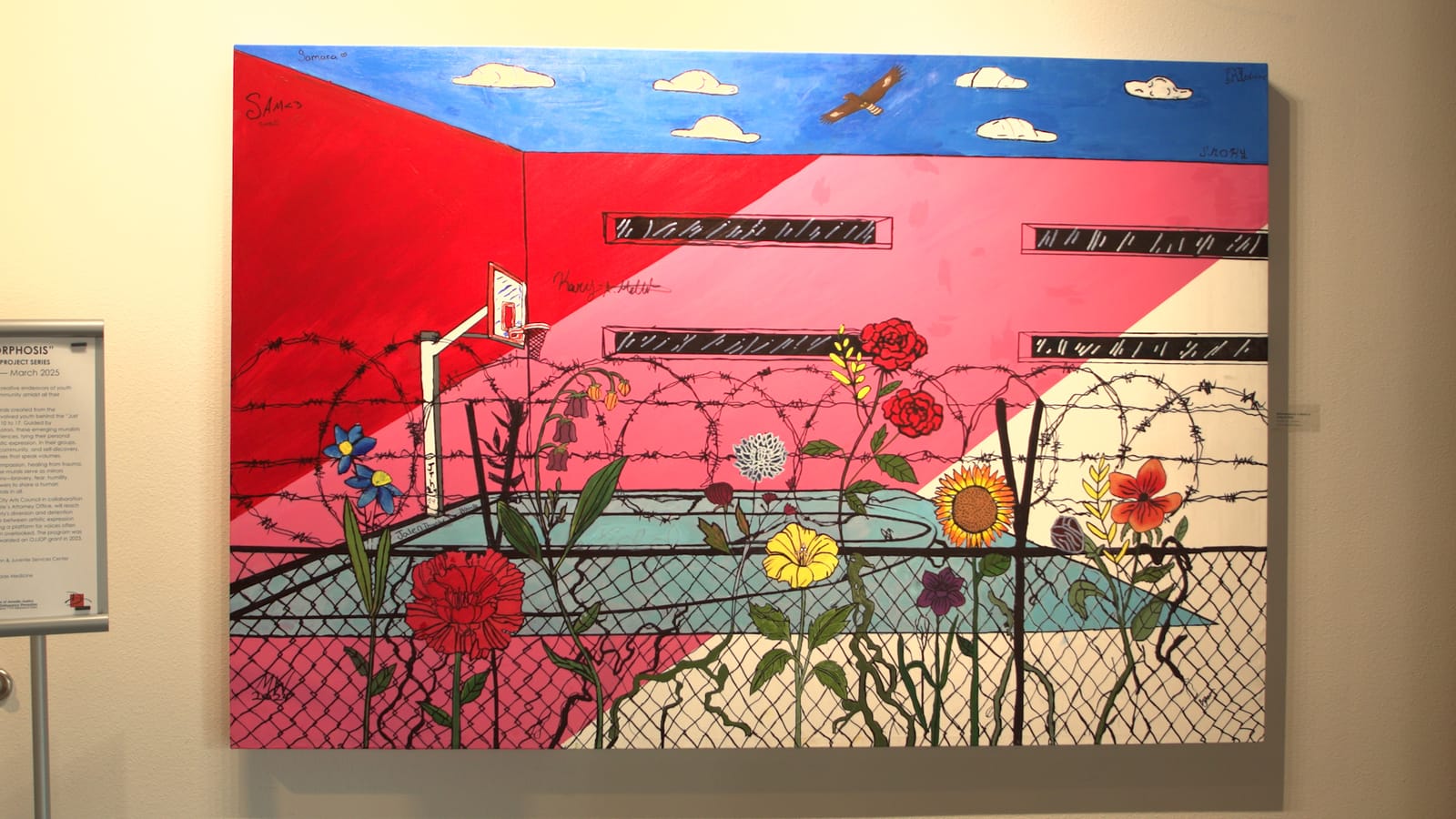Editor's note: This is the seventh in a series of stories on children that Jackie Hendry, producer and host of South Dakota Public Broadcasting's "South Dakota Focus" will write for South Dakota News Watch. Each month, she previews the upcoming show.
RAPID CITY, S.D. – Just inside the Dahl Arts Center in downtown Rapid City, a large canvas features the painting of an outdoor basketball court behind a chain link fence and barbed wire. An eagle glides in the sky above a fuchsia building.
Flowers bloom in the foreground – each representing a girl serving time at the nearby Juvenile Services Center. They designed the mural, and their vision was brought to vibrant color by young people working to avoid a future behind bars through a juvenile diversion program.
The Just Us Mural Project in Pennington County is one example of diversion programming at work. It offers young people an opportunity to avoid entering a justice system that is increasingly difficult to leave by making amends with the community while also giving them a chance to experiment with more productive outlets for their emotions.
Solving juvenile justice problems early
Not every child who runs afoul of the law belongs in the criminal justice system. Pennington County State's Attorney Lara Roetzel firmly believes this after more than 25 years as a prosecutor.
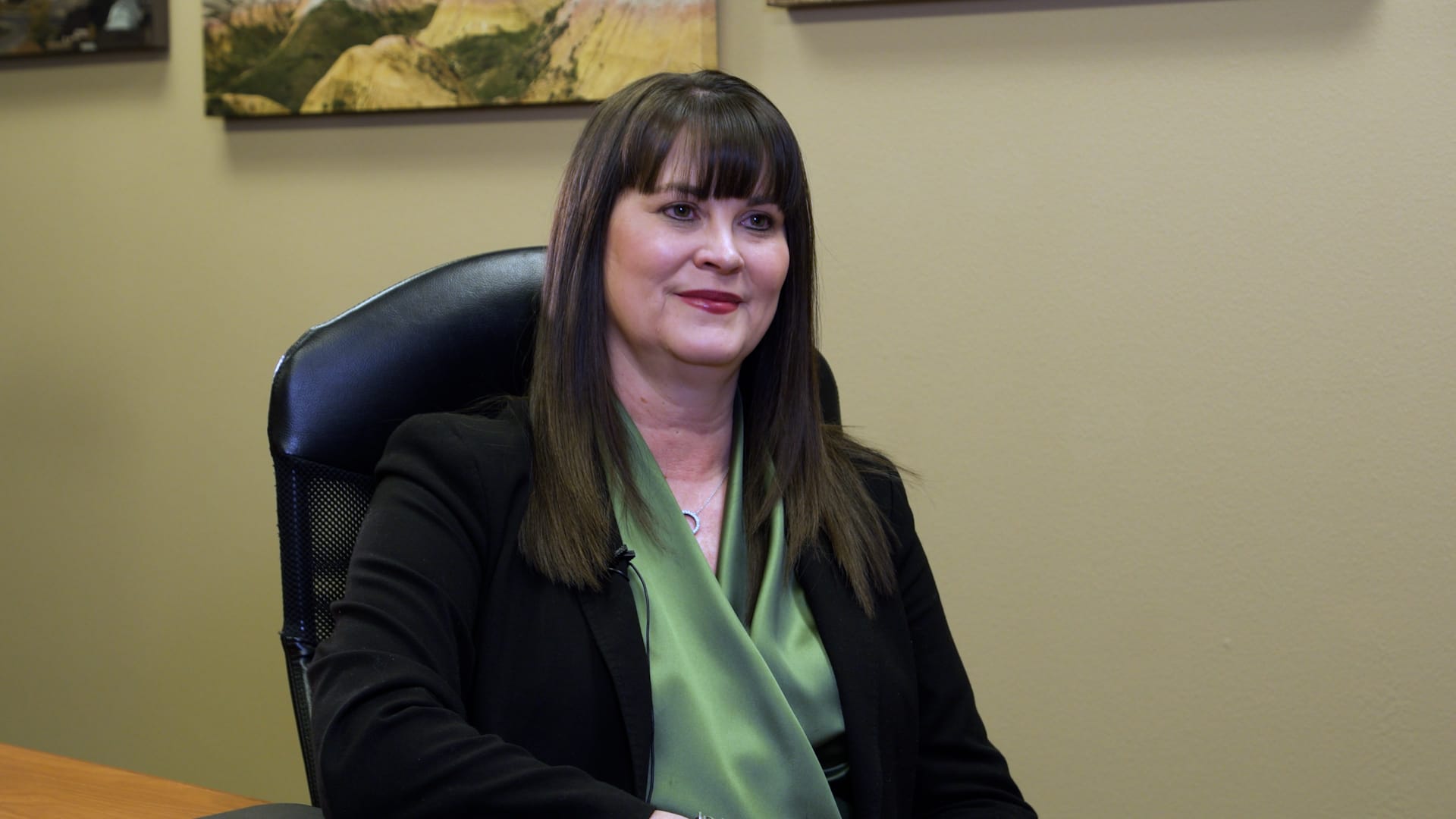
"Statistics have shown that once a kid goes into the criminal justice system, they usually don't get out of it," said Roetzel. She explained most young people who enter probation struggle to keep out of trouble because "kids are kids."
"What we found is that they're going to continue to have problems on probation – the same kinds of problems that all kids have," said Roetzel. "They're gonna break curfew. They're going to have trouble going to school, maybe. And once you're on probation, you stay on probation, and then they find themselves getting in more and more trouble."
To be clear, especially serious offenses – like violent crimes or other high level offenses – continue to land juveniles in the court system. However, some first-time offenses and petty crimes might make a young person eligible for diversion programming instead. These programs can include substance abuse counseling, Teen Court and mediation through the Center for Restorative Justice.
"One of the main factors we've identified in indicating a predilection later in life to go to prison is someone that's been in the juvenile system," said Roetzel. "It's so important that we identify kids who are at risk and try to solve problems early."
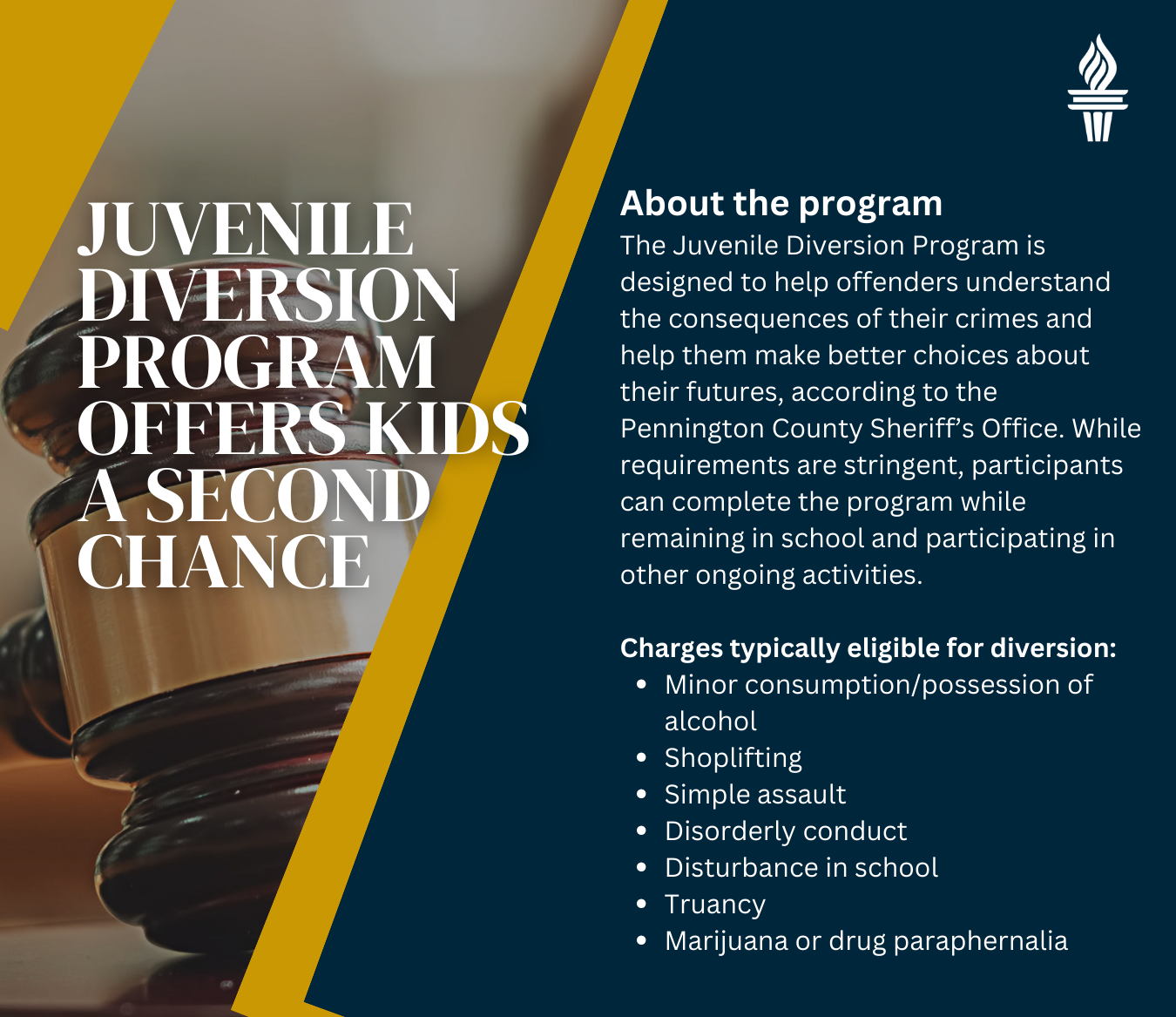
Lawmakers approve funding increase for juvenile diversion
Roetzel was one of the proponents of state legislation this year to increase the reimbursement rate for counties who make use of diversion programs.
Senate Bill 47 increased the state's reimbursement from $250 per child to $750. The bill was introduced at the request of the Department of Corrections, which has reimbursed counties for successful juvenile diversions for eight years. Kristi Bunkers, the director of juvenile services within the state DOC, told lawmakers more than 12,000 young people have avoided entering the formal justice system for alcohol, drug, tobacco or truancy offenses in that time.
"We know one of the greatest predictors of adult incarceration is juvenile incarceration," Bunkers told the House Judiciary Committee. "This bill aims to prioritize public funds for proven programs that reduce offending and support our next generation rather than putting them on a path towards the adult criminal justice system."
Lawmakers ultimately approved the increased reimbursement rate.
"When you look at how much money you would spend to incarcerate an adult in a prison, it doesn't even begin to compare," Roetzel said. "If we can do early intervention on a young person and that eventually leads to them not going to prison as an adult? I mean, it's just easy math."
In many cases, young people committing petty offenses or abusing drugs and alcohol require counseling to address the root cause of the behavior. But many families can't afford those services on their own. A shortage of local resources means some counseling services and substance abuse courses are only offered online, which can still be pricey.
"Well, I can't tell a kid, 'Alright, I want you to go through diversion, but I want you to take a class where you're going to learn how to make better choices, and it's going to cost you $600,'" said Roetzel. "They can't fail just because they didn't have the money to do it. ... State's attorneys need the financial resources to be able to help kids be successful."
Ripples of Daugaard-era juvenile justice reform
An emphasis on community-based diversion programming began in earnest during the Gov. Dennis Daugaard administration.
In 2011, South Dakota had one of the highest rates of juvenile commitments in the country, in part because young people were put behind bars for low-level offenses. The passage of Senate Bill 73 in 2015 made diversion the default for many misdemeanors and established the financial incentive for counties. However, not all communities have the robust options that Pennington County had already established.
"I think it was very well intended and we've seen some positive effects from what was done with Senate Bill 73," said Attorney General Marty Jackley. "But again, there needed to be some additional funding that didn't come. Some of it's come now."
The same year Daugaard signed Senate Bill 73 into law, the state closed the STAR Academy in Custer that had served as a detention camp for juveniles for decades.
"The state saved so much money when it closed down the Custer boot camp," said Jackley. "Those dollars, instead of going back to the general fund, should have gone back to communities to use for diversion programs."
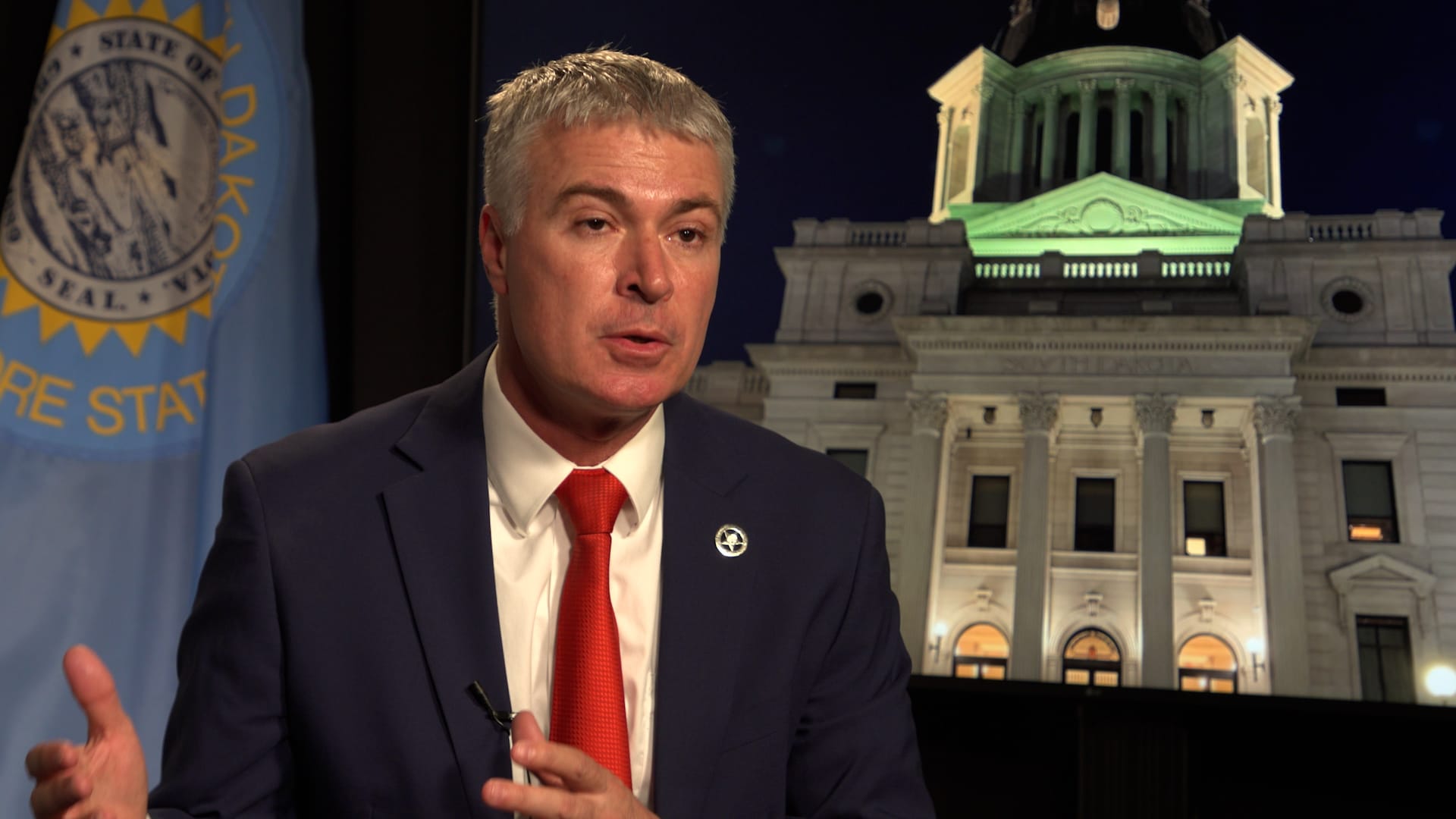
Instead, additional funding is coming years later through this year's Senate Bill 47. Jackley said that's a good thing, although results may vary county by county.
According to its recently-released annual report, the Pennington County State's Attorney's Office saw 669 young people enter some type of diversion programming in 2023, with 582 (87%) successfully completing the program. Based on the state's previous reimbursement rate, that amounted to $145,500 back to Pennington County. At the recently-approved rate increase from Senate Bill 47, 582 successful juvenile diversions would mean $436,500 back to the county.
The increase is likely to make a significant difference in more populous counties with higher numbers of youth offenders. Of course, that impact is less impressive in smaller counties.
Jackley previously served as state's attorney for both Jones and Haakon counties – two rural areas that might see a handful of diversion-eligible cases a year.
"Rapid City has invested in a juvenile diversion program," said Jackley. "That's very significant. Some of our smaller counties simply don't have those resources, and so you have to treat those different cases differently."
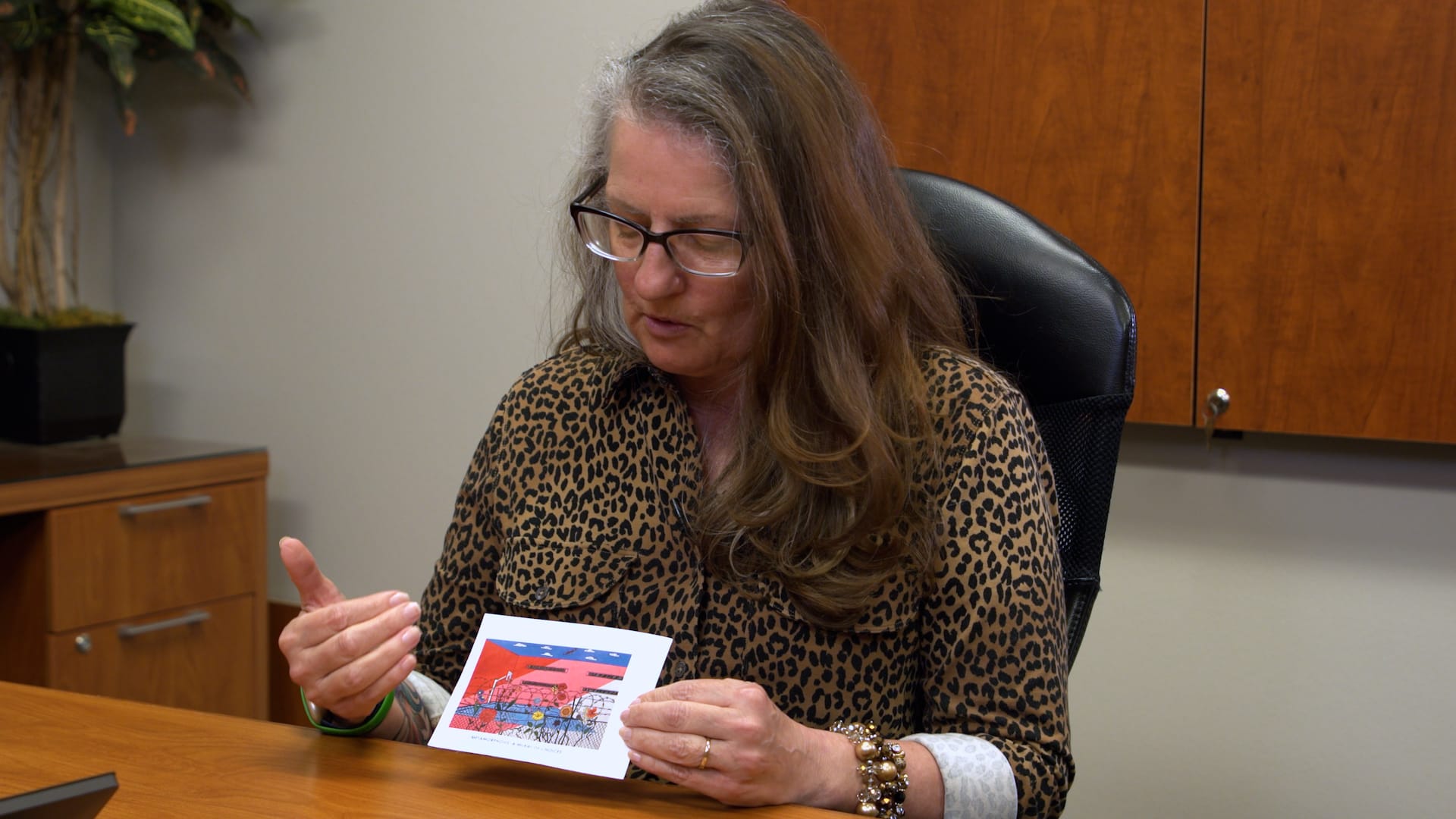
Mural program had 'shockingly incredible outcomes'
Other diversion programs are supported by grant funding and community partnerships. In addition to more traditional diversion programs, Pennington County has also partnered with other organizations to offer Jujitsu training, skateboarding and art programs for youth working through diversion.
"People have a hard time understanding how successful they are because they think that we're rewarding young people for their poor behavior, and it's not true," said Kim Morsching, director of diversion for Pennington County. "It's a different way to reach each unique individual."
One of those alternative juvenile diversion programs is the Just Us Mural Project, or JUMP, provided in partnership with the Rapid City Arts Council.
Late last year, the Pennington County State's Attorney's Office was one of five programs in the country to be awarded a $50,000 grant from the U.S. Department of Justice's Office of Juvenile Justice and Delinquency Prevention to support access to art programming for at-risk young people.
The mural of the basketball court is the third to be created since the grant program began and the first designed by members of the girls unit at the Juvenile Services Center. The two other mural designs feature a similar theme: the struggle between right and wrong or a good path and bad path.
By the end of the grant period, 17 murals will have been created with the input of around 300 young people. The process includes an art therapist to help participants work through emotions that may arise, and an artist-in-residence ensures each child has some input on the finished work.
The grant application came after the success of a previous mural program.
"We had incredible outcomes," Morsching said. "Shockingly incredible outcomes. Like, there were people who never got into trouble again. We never saw their names again."
She added that young people who had never thought of themselves as an artist were able to see themselves in a new light after the experience.
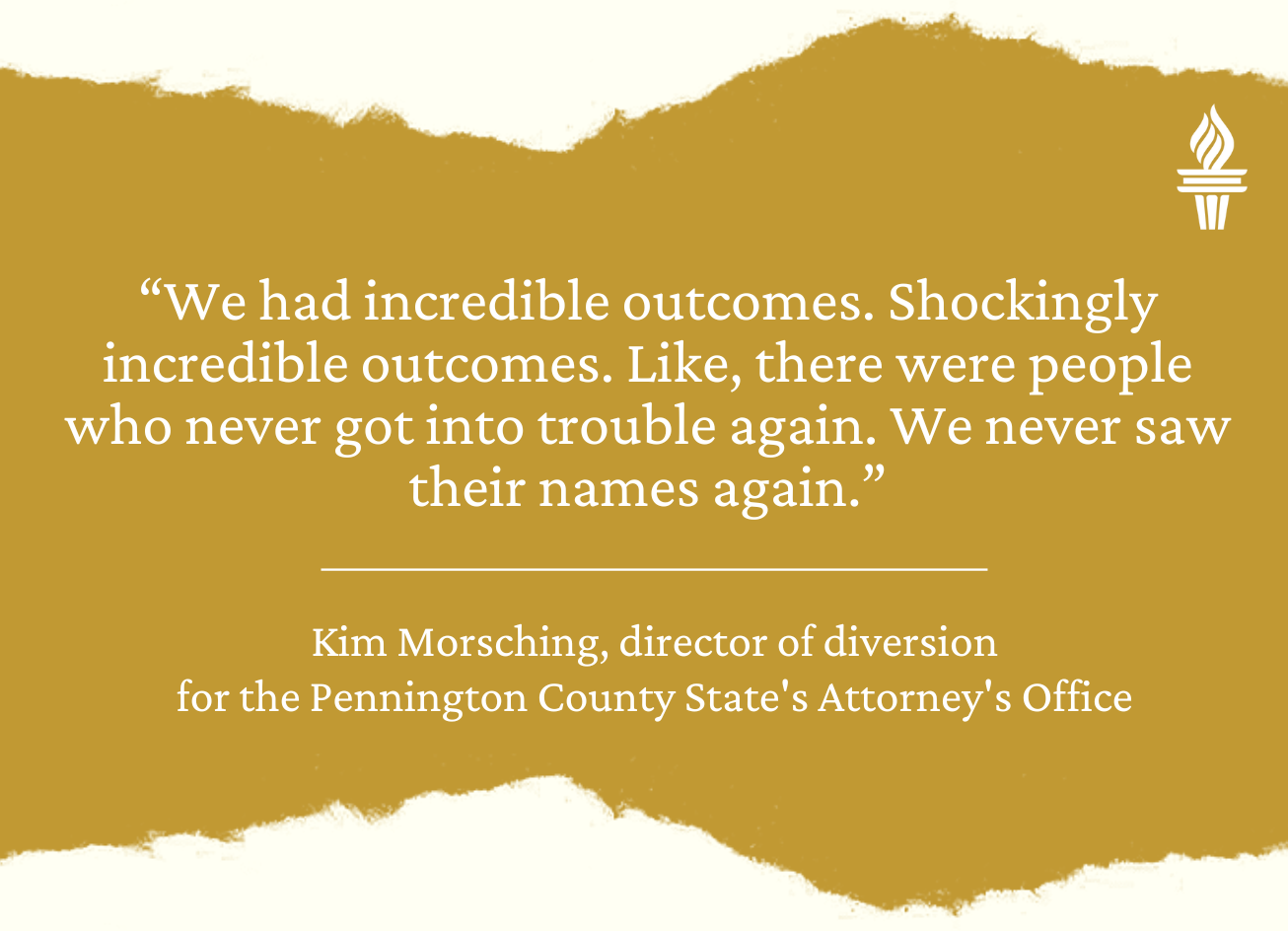
That's the level of success she and other partners hope to achieve with JUMP. The Dahl Arts Center has offered opportunities for the young people to stay involved with art by inviting them back for future murals and gifting them art supplies, Morsching said.
"It's like developing a lifetime sport. You're developing a lifelong passion," she said.
By definition, a successful diversion means a young person doesn't enter the criminal justice system. That can make juvenile diversion success stories difficult to quantify. In Morsching's own experience, she learns about success stories by running into parents or former juveniles years after the fact. It's often only then that she learns a particular program changed a young person's life.
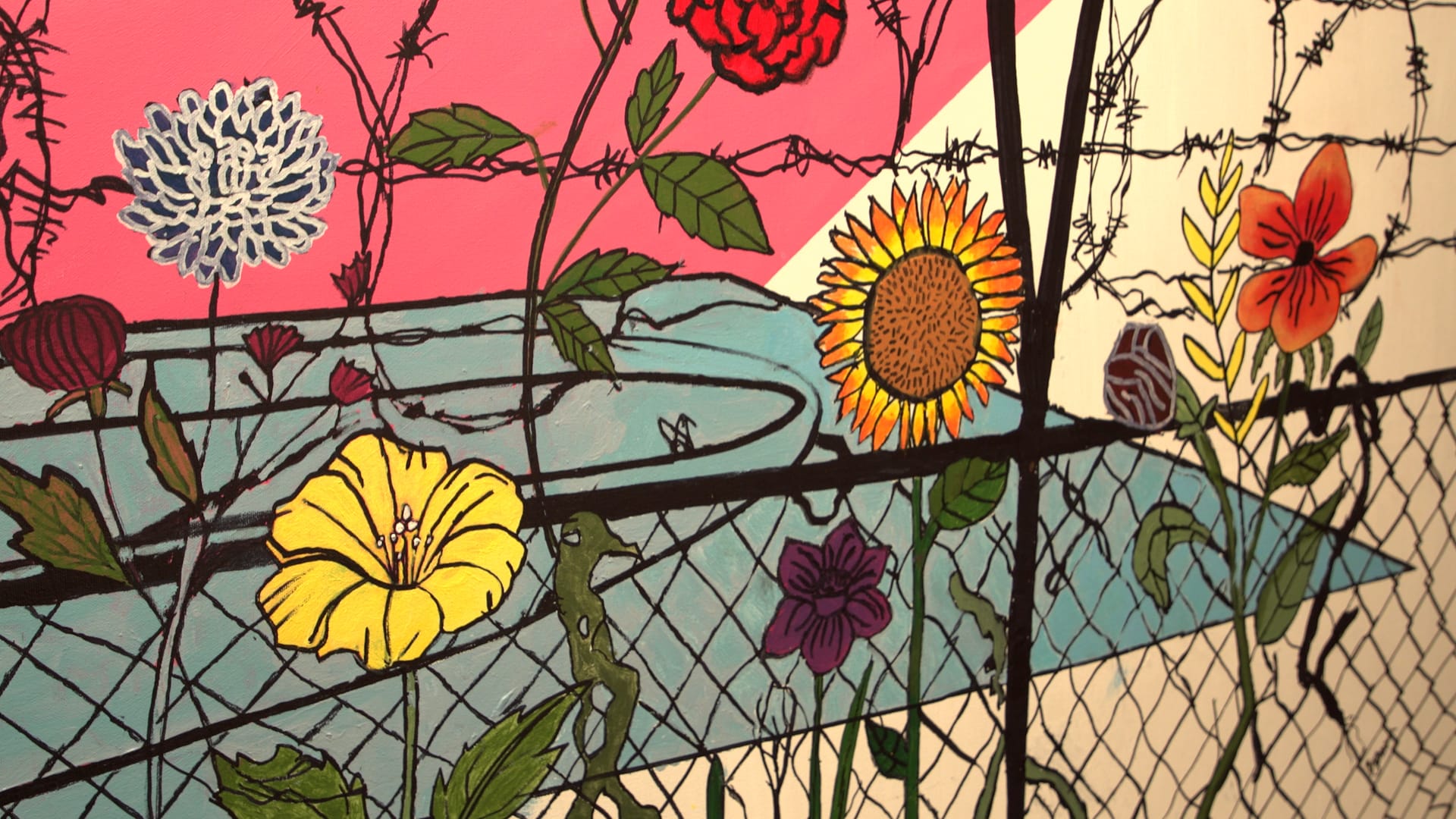
Morsching believes its important to remember that kids who end up in her office are making decisions based on their own limited experience and still-developing brains. In other words, many are doing the best they can with what they have. Support, accountability and alternative outlets for their emotions can make all the difference in redirecting negative behaviors.
"Until they have a new tool, they're not going to use it," said Morsching. "And that's what diversion provides. We provide that new tool."
How to watch 'South Dakota Focus' on SDPB
The next episode of South Dakota Focus airs on Thursday, March 28, at 8 p.m. Central time / 7 p.m. Mountain time. It can be viewed on SDPB-TV 1, Facebook, YouTube and SD.net
The episode includes:
- A look at how policy approaches to juvenile justice have shifted in recent years
- The story of Huron parents who struggled to find appropriate resources for their son
- How creative diversion programs can help keep young people out of the justice system

